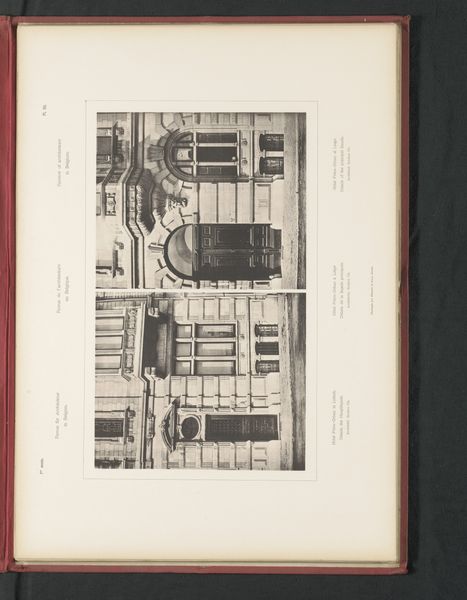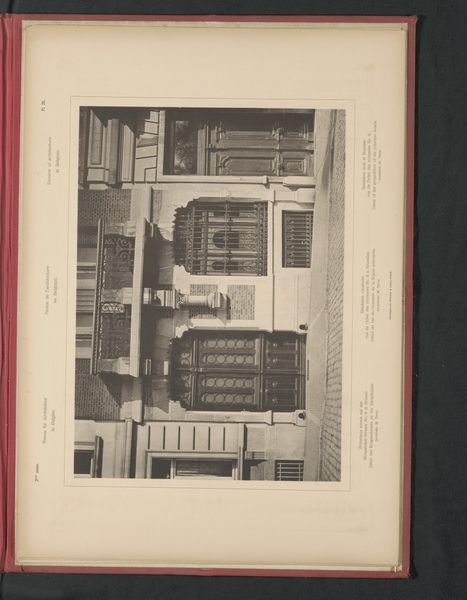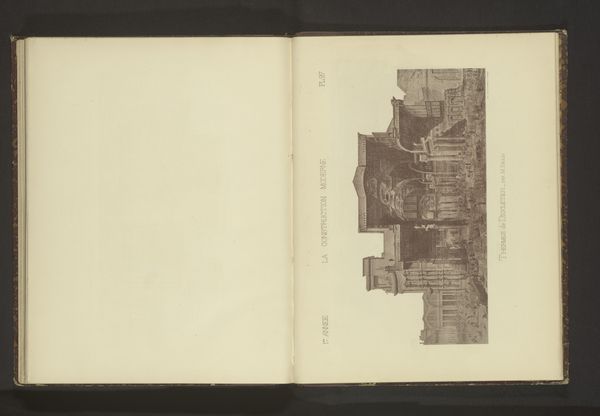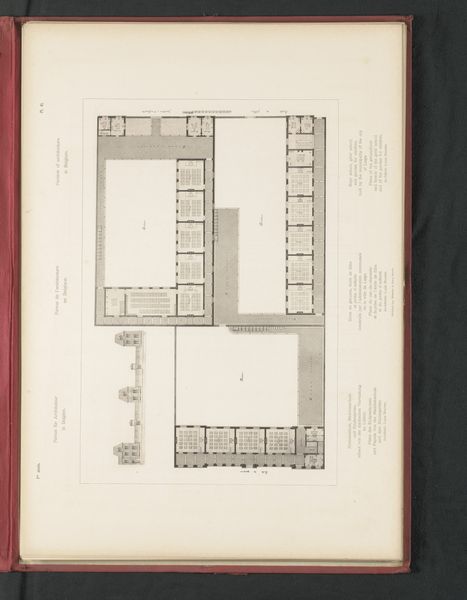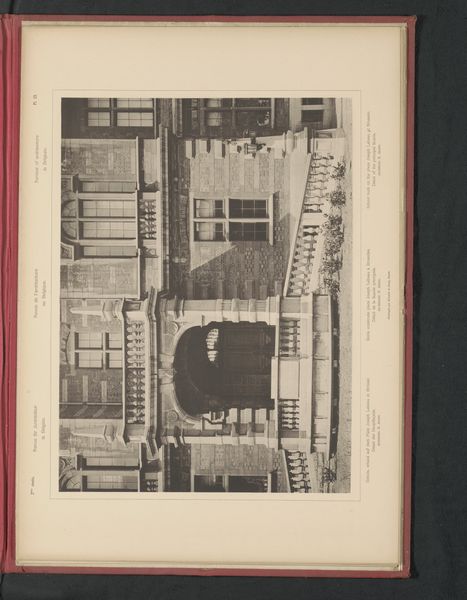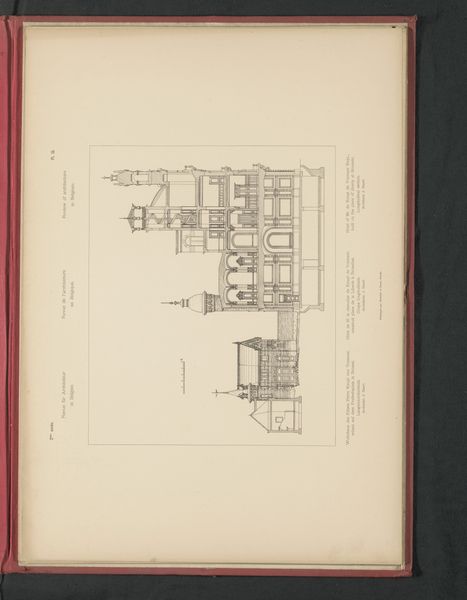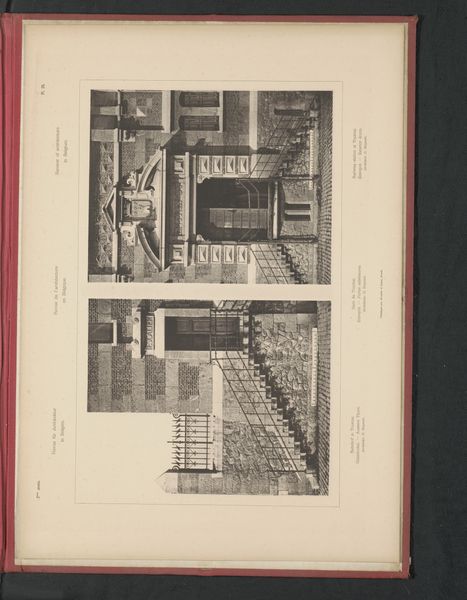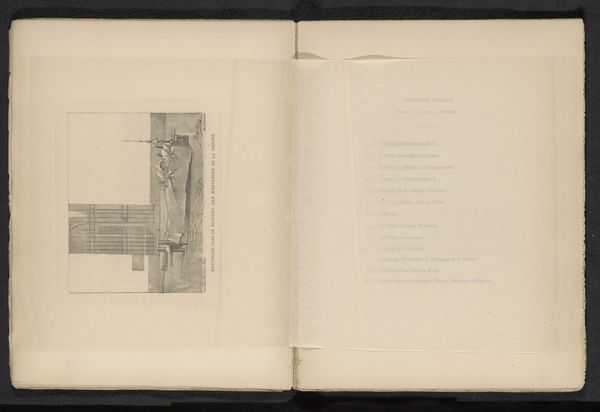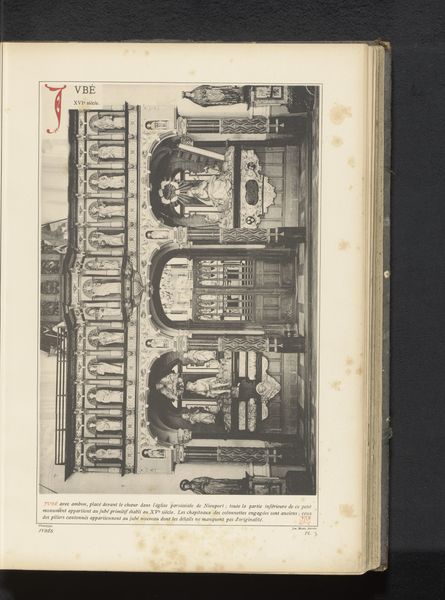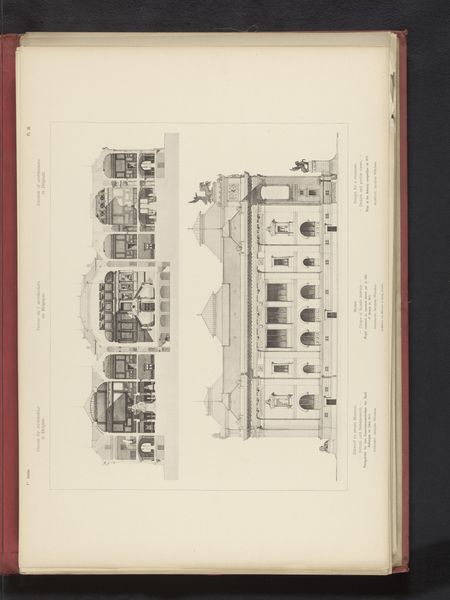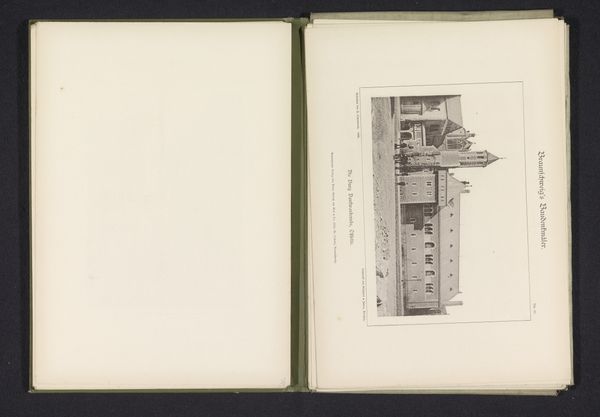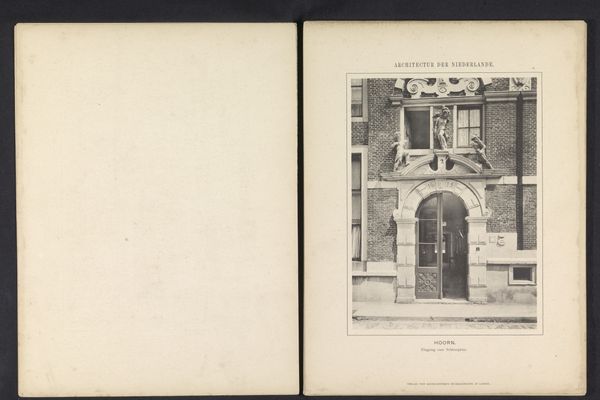
Reproductie van een ontwerp van een marmeren schouw door Théophile Fumière before 1893
0:00
0:00
Dimensions: height 258 mm, width 313 mm
Copyright: Rijks Museum: Open Domain
Curator: Here we have a fascinating etching—a reproduction of a marble mantelpiece design by Théophile Fumière. Dating from before 1893, it exemplifies Neoclassical ideals. The crisp lines of the print itself speak to the detailed craftsmanship of the era. What do you make of it? Editor: Initially, it feels very cold and controlled. The formality and symmetry give a strong impression of hierarchy and, perhaps, distance from the warmth implied by a fireplace. There's a certain severity that reads almost as a political statement. Curator: An interesting take. Looking closely, I'm struck by how this print, created via etching, preserves the original artistic intent through replicated imagery. Consider the enduring cultural symbolism inherent in classical motifs. How might those symbols play a part in the work's significance? Editor: Those classical motifs are interesting choices—evoking imperial power structures while appearing domestically in someone’s home. Who would have had the privilege of possessing a marble mantel like this? And what narratives would it silently endorse about class and societal roles? Curator: Certainly, these choices of form suggest power. The precise lines evoke rational thought, reflecting the Enlightenment values of reason and order that underpin Neoclassicism. There’s a specific mood conveyed through its formal language, which creates a cultural continuity with historical ideals. Editor: I can see that, and the focus on historical ideals certainly served a particular group. The controlled and idealized forms obscure other possible narratives. Considering the late 19th century, there are complex discussions regarding labour, privilege, and exclusion wrapped up in every line and flourish of that fireplace. Curator: Your reading certainly emphasizes the societal framing of the fireplace design. Viewing it now, I realize how the artwork provides us a direct, unfiltered visualization into late nineteenth century ideals, aesthetics, and culture. The etching preserves both the vision of the original design as well as its time. Editor: Absolutely, and for me, it underlines how important it is that we engage with not just what the artist intended but what these images, even seemingly domestic ones, say about our history. These choices carry symbolic weight—choices made within systems of power and influence. Curator: Indeed. Looking again, it serves as a valuable record—not only of artistry but also a time capsule holding complex truths. Editor: Exactly, revealing hidden dialogues within what appears orderly and resolved.
Comments
No comments
Be the first to comment and join the conversation on the ultimate creative platform.
